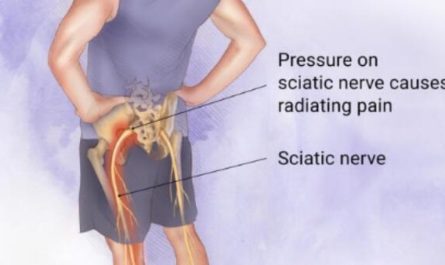Shoulder and arm pain can be incredibly debilitating, affecting your daily activities and overall quality of life. Whether you’re experiencing discomfort from an injury, overuse, or a chronic condition, finding effective ways to alleviate the pain is essential. This article will explore 12 causes and some proven methods to help you relieve shoulder and arm pain.
Common symptoms of shoulder and arm pain
Shoulder and arm pain can present with various symptoms, including:
- Sharp or dull pain in the shoulder and arm
- Stiffness or limited range of motion
- Weakness in the affected arm
- Numbness or tingling sensations
- Swelling or inflammation in the shoulder joint
- Difficulty performing daily activities that involve arm movement

12 Common Causes of Pain in Shoulder and Arm
1. Rotator Cuff Injuries
One of the most prevalent causes of pain in the shoulder is rotator cuff injuries. This group of four muscles and tendons plays a vital role in shoulder stability and mobility.
Common causes of rotator cuff injuries include overuse, trauma, or gradual wear and tear. Symptoms may include pain, weakness, and limited range of motion.
Treatment for rotator cuff injuries varies based on the severity of the injury. For mild cases, rest, ice, and over-the-counter pain relievers can help alleviate discomfort.
Physical therapy is often recommended to strengthen the shoulder muscles and improve flexibility. In more severe cases, when conservative treatments are insufficient, corticosteroid injections or surgery may be considered to repair the torn tendons.
2. Shoulder Impingement Syndrome
Shoulder impingement syndrome, also known as subacromial impingement, occurs when the tendons of the rotator cuff become compressed between the shoulder blade and the head of the upper arm bone. This can lead to inflammation, pain, and difficulty lifting the arm.
The initial treatment for shoulder impingement syndrome involves rest, avoiding activities that exacerbate the pain, and using anti-inflammatory medications. Physical therapy plays a crucial role in restoring shoulder function and improving posture.
In cases where conservative methods do not provide relief, corticosteroid injections or arthroscopic surgery to decompress the shoulder joint may be recommended.
3. Frozen Shoulder (Adhesive Capsulitis)
Frozen shoulder, or adhesive capsulitis, results from the thickening and tightening of the shoulder joint capsule. It typically progresses through three stages, causing pain and stiffness, ultimately limiting shoulder movement. This condition often affects individuals between the ages of 40 and 60.
The primary goal in treating a frozen shoulder is to manage pain and improve shoulder mobility. Physical therapy, stretching exercises, and heat applications are commonly used to reduce stiffness.
In more severe cases, a doctor may perform joint distension to stretch the capsule or manipulation under anesthesia (MUA) to break up scar tissue and increase the range of motion.
4. Bursitis
Bursitis is an inflammation of the bursae, small sacs that cushion and reduce friction between tendons and bones in the shoulder joint. Repetitive movements, injuries, or underlying medical conditions can trigger bursitis, leading to localized pain and swelling.
The first step in treating bursitis is rest and avoiding activities that aggravate the condition. Ice packs and anti-inflammatory medications can help reduce inflammation and pain.
Physical therapy is beneficial for strengthening the shoulder muscles and preventing future flare-ups. In some cases, corticosteroid injections may be administered to relieve severe pain and inflammation.
5. Tendinitis
Tendinitis is the tendon’s inflammation, commonly caused by repetitive motions or overuse. When it occurs in the shoulder, it can result in pain and tenderness in the affected area.
Tendinitis treatment begins with rest, ice, and over-the-counter pain relievers. Physical therapy helps to improve tendon flexibility and strength.
In chronic cases, platelet-rich plasma (PRP) therapy or corticosteroid injections may be used to promote healing. Severe cases of tendinitis may require surgical intervention to repair the damaged tendon.
6. Arthritis
Arthritis is a chronic condition affecting various joints, including the shoulder. Shoulder arthritis may manifest as osteoarthritis or rheumatoid arthritis, causing pain, stiffness, and reduced range of motion.
Management of shoulder arthritis focuses on reducing pain and inflammation. Over-the-counter pain medications and nonsteroidal anti-inflammatory drugs (NSAIDs) can provide relief.
Physical therapy is essential for maintaining shoulder mobility and strength. In advanced cases, joint replacement surgery may be considered to alleviate pain and restore joint function.
7. Fractures and Dislocations
Injuries such as fractures or dislocations in the shoulder region can lead to severe pain in the shoulder and arm. Fractures are breaks in bones, while dislocations occur when bones are forced out of their normal positions.
The treatment for shoulder fractures and dislocations depends on the type and severity of the injury. Immobilization with a sling or brace is often necessary for proper healing.
In some cases, closed reduction may be performed to realign the bones without surgery. Severe fractures or dislocations may require surgical intervention to stabilize the joint.
8. Nerve Compression (Brachial Plexus Injury)
A brachial plexus injury involves damage to the nerve network that controls the shoulder, arm, and hand movements. Compression or trauma to the brachial plexus can cause pain, weakness, and numbness.
Treatment for brachial plexus injuries may involve physical therapy to improve muscle strength and coordination. In some cases, nerve grafting or nerve transfers may be considered to restore nerve function. Severe injuries may require surgical exploration and repair of the damaged nerves.
9. Cervical Radiculopathy
Cervical radiculopathy refers to a pinched nerve in the neck that can lead to pain, tingling, and weakness in the shoulder and arm. This condition is often caused by herniated discs or bone spurs in the cervical spine.
Non-surgical treatments for cervical radiculopathy include rest, physical therapy, and anti-inflammatory medications. In cases where conservative methods do not yield improvement, epidural steroid injections may be administered to reduce nerve inflammation.
Surgical options such as discectomy or cervical fusion are considered for severe or persistent cases.
10. Tendon Tears
Tendon tears in the shoulder, such as a biceps tendon tear, can cause significant pain and affect the arm’s strength and function. These tears can occur due to acute injuries or due to degeneration over time.
Treatment for tendon tears depends on the extent and location of the tear. Conservative treatments include rest, physical therapy, and anti-inflammatory medications. For severe tears, surgical repair may be necessary to reattach the tendon to the bone.
11. Heart-Related Conditions
In some cases, pain in the shoulder and arm may be a symptom of underlying heart-related conditions, such as angina or heart attack. It’s essential to seek immediate medical attention if you experience unexplained or severe pain in this region. Especially when accompanied by chest discomfort or shortness of breath.
Treatment for heart-related conditions causing shoulder and arm pain requires prompt medical attention. If diagnosed with heart-related issues, patients may receive medications to manage symptoms and reduce the risk of complications.
Lifestyle changes like a heart-healthy diet and regular exercise are essential for managing heart conditions.
12. Referred Pain
Referred pain is a phenomenon where pain in one part of the body is felt in another. This pain can occur due to issues in nearby structures, such as the neck or upper back, and may manifest as discomfort in the shoulder and arm.
The treatment for referred shoulder pain involves addressing the underlying cause. If the pain originates from the neck or upper back, physical therapy, chiropractic care, or massage therapy may help alleviate discomfort.

6 Best Exercises for Shoulder and Arm Pain
1. Shoulder Rolls
Shoulder rolls are a simple yet effective exercise to release tension and improve mobility in the shoulders and arms.
To perform shoulder rolls:
- Stand or sit up straight with your arms relaxed at your sides.
- Inhale deeply as you lift your shoulders up towards your ears.
- Exhale slowly and roll your shoulders back and down in a circular motion.
- Complete 10-15 rolls in one direction and then repeat in the opposite direction.
2. Arm Circles
Arm circles are excellent for warming up the shoulder joints and increasing blood flow to the area.
To perform arm circles:
- Stand with your feet shoulder-width apart and extend your arms out to the sides.
- Make small circles with your arms, gradually increasing the size of the circles.
- After 10-15 seconds, reverse the direction of the circles.
- Repeat for 30 seconds to 1 minute.
3. Doorway Stretch
The doorway stretch targets the chest and front shoulder muscles, relieving pain caused by poor posture.
To perform the doorway stretch:
- Stand in a doorway with your arms bent at 90-degree angles and your elbows resting against the door frame.
- Step forward with one foot, gently stretching your chest and front shoulder muscles.
- Hold the stretch for 20-30 seconds while keeping your back straight.
- Repeat on the other side.
4. Bicep Curls
Bicep curls strengthen the biceps and forearms, promoting stability in the arms and shoulders.
To perform bicep curls:
- Hold a dumbbell in each hand with your arms extended down by your sides.
- Slowly curl the weights towards your shoulders while exhaling.
- Inhale as you lower the weights back down to the starting position.
- Repeat for 10-12 repetitions.
5. Tricep Dips
Tricep dips target the triceps and shoulders, helping to reduce pain and increase upper body strength.
To perform tricep dips:
- Sit on the edge of a stable chair or bench with your hands gripping the edge beside your hips.
- Slide your hips off the edge and bend your elbows to lower your body towards the floor.
- Push yourself back up to the starting position once your elbows are at a 90-degree angle.
- Aim for 10-12 repetitions.
6. Resistance Band Rows
Resistance band rows engage the back and shoulders, improving posture and reducing strain on the arm muscles.
To perform resistance band rows:
- Attach a resistance band to a sturdy anchor point at waist height.
- Hold one end of the band in each hand, step back to create tension, and stand with your feet shoulder-width apart.
- Keeping your back straight, pull the bands towards your chest by squeezing your shoulder blades together.
- Slowly release back to the starting position.
- Repeat for 10-12 repetitions.
How to prevent shoulder and arm pain?
While it may not be possible to prevent all causes of shoulder and arm pain, there are certain measures you can take to reduce the risk. These include:
- Avoiding repetitive movements or overuse of the shoulder and arm
- Practicing proper lifting techniques and using appropriate equipment to avoid straining the shoulder joint
- Maintaining good posture and avoiding prolonged periods of sitting or standing in one position
- Engaging in regular exercise and incorporating strengthening exercises for the shoulder and arm muscles
- Taking breaks and stretching during activities that involve repetitive arm movements
- Using ergonomic equipment and ensuring proper workstation setup to minimize strain on the shoulder and arm
When to see a doctor?
It is recommended to seek medical attention for shoulder and arm pain in the following situations:
- The pain is severe or persistent and does not improve with rest or over-the-counter pain medications.
- The pain is accompanied by other concerning symptoms such as chest pain, shortness of breath, or signs of infection.
- There is a visible deformity or swelling in the shoulder or arm.
- The pain is the result of a traumatic injury or accident.
- The pain significantly affects your ability to perform daily activities or impacts your quality of life.






